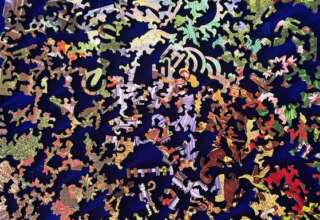
Conclusions
Does any of this Theory A make sense? Is this theory of leadership nothing more than a nostalgic (and perhaps even dangerous) regression to an outmoded, primitive and even superstitious way of seeing the 21st Century world? Is this any way to articulate the role to be played by leadership in this challenging VUCA-Plus environment? Does Halle Selassie represent this theory as it is actually being practiced (and misused) or can we look to Nelson Mandela as a representative of what Theory A can be in the real world (recognizing all of the risks associated with enactment of this theory)? Might Theory A tap into some of the new ways in which we are viewing our world and leadership in the world? Does the new science of complexity and chaos relate to what I am proposing? Might the emerging wisdom of Quantum physics as applied to our understanding of dynamic systems be aligned with Theory A? Could the introduction of Buddhist thought into 21st Century leadership theory be a valuable complement to Theory A? Does Theory A open the way to a more global perspective on leadership?
At the very least, our established understanding in the Western world of the ways in which social constructions influence our views of reality, and ways in which effective leadership needs to be contextual and adaptive seem to align with the insights offered by African leaders. Terms such as agility, constructive dialogue, collective responsibility, and community capital might be fully understood and appreciated in a traditional African community. Ken Gergen (2011) exploration of the ways an individual’s identity as a “relational being” is clarified and energized by a collective commitment would seem to ring true in an African society. Trees that interact with other trees would not come as a surprise to those steeped in African culture. The lessons to be learned from a forest about the need for interdependence would not be lost on elders in an African organization and community. Perhaps, we of the West should be just as open to learning from not only the trees, but also our colleagues in Africa. Hopefully, this preliminary offering of Theory A opens the door a little bit to this learning.
_______________










Charly Wiliamse
August 16, 2021 at 10:23 pm
I have thought so many times of entering the blogging world as I love reading them. I think I finally have the courage to give it a try. Thank you so much for all of the ideas!
power bi course
December 7, 2021 at 7:29 am
Thanks for sharing information.